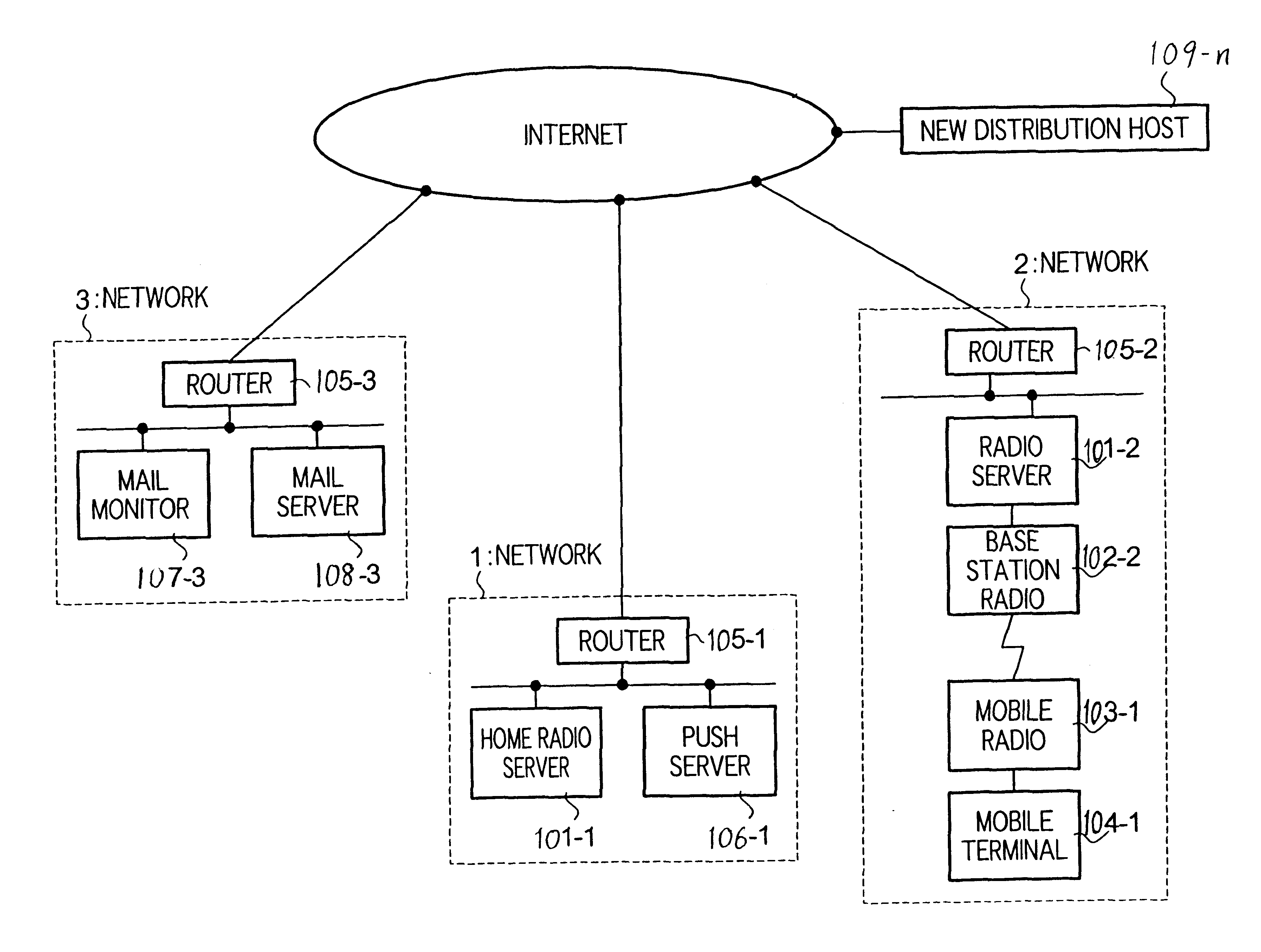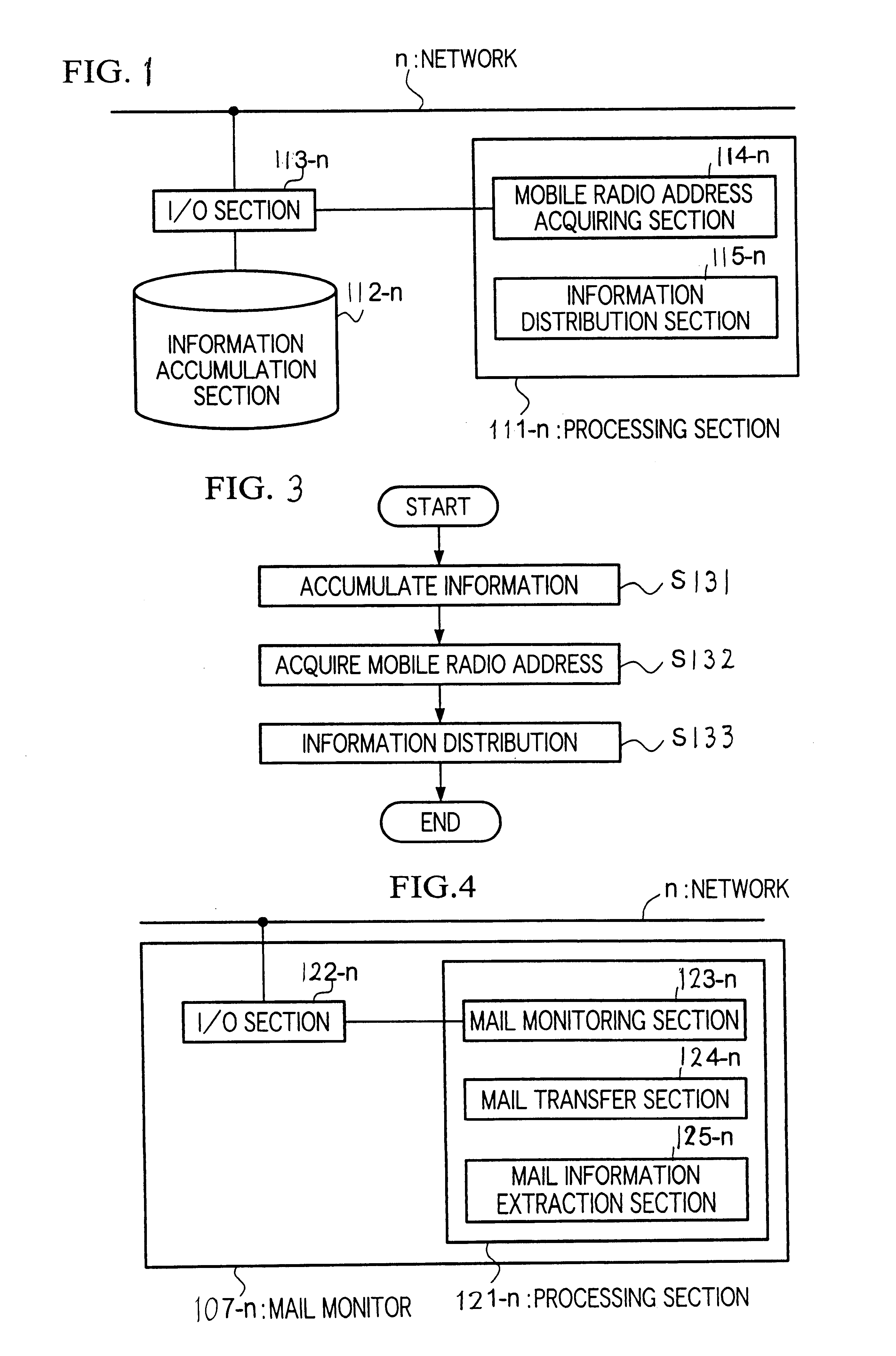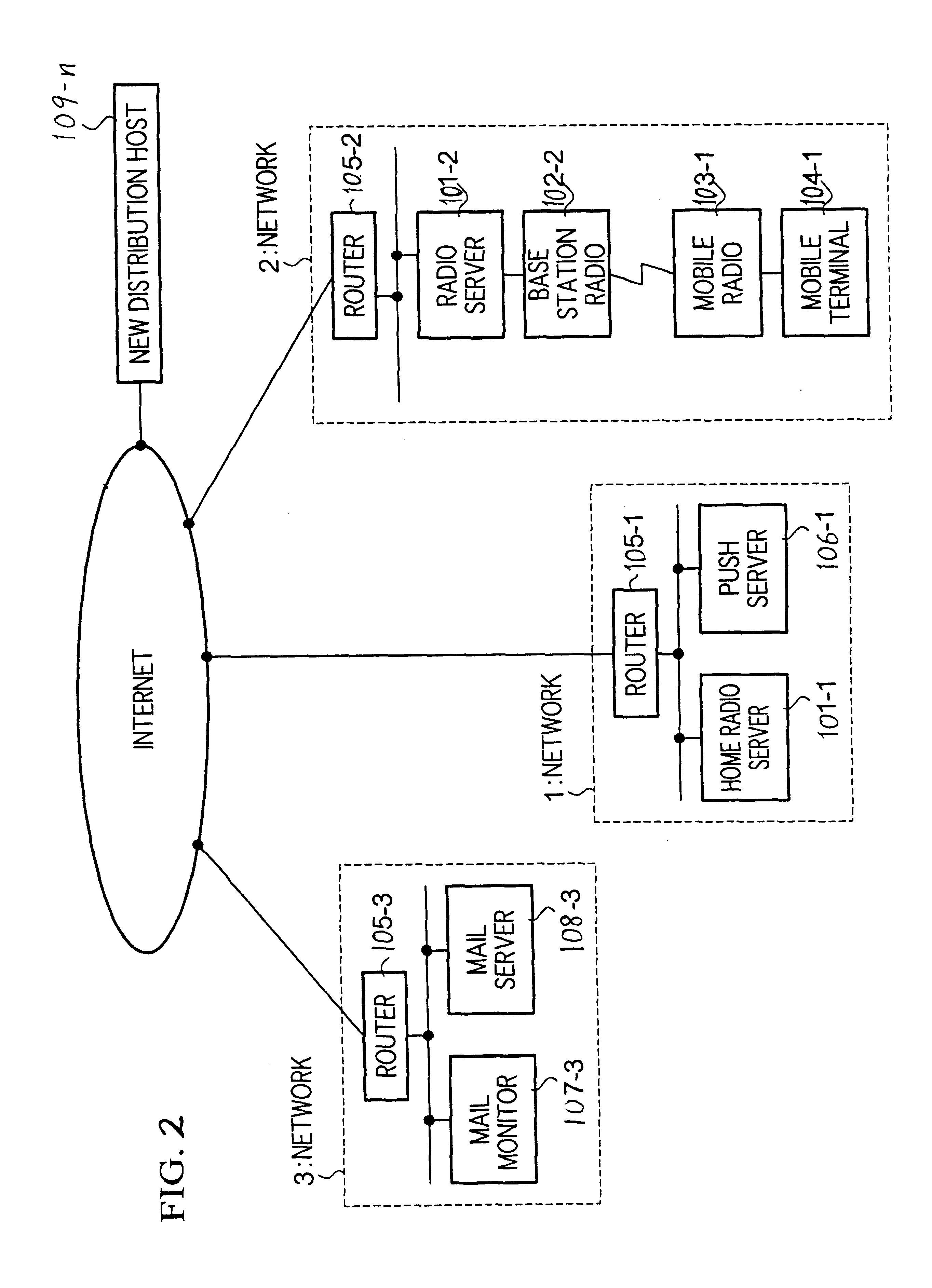Radio communication system for push information delivery
a radio communication system and information delivery technology, applied in the field of network-based radio communication systems, can solve the problems of increasing network traffic, not being able to deliver the necessary information to people in need of that information, and not being able to provide the push-type service to those clients operating with a lan using conventional technology
- Summary
- Abstract
- Description
- Claims
- Application Information
AI Technical Summary
Benefits of technology
Problems solved by technology
Method used
Image
Examples
embodiment 1
FIG. 1 is a block diagram of a structure of the push function server 106-n in In this embodiment, explanations relate to the case in which a plurality of networks n (n=1, 2, . . . ) are connected to the Internet for its use. It should also be noted that the communication protocol is not necessary to be limited to TCP / IP.
The push function server 106-n in this embodiment is comprised by: a processing section 111-n having a mobile radio address acquiring section 114-n and an information distribution section 115-n; an information accumulation section 112-n for storing identifier information for the mobile terminal 104-n to which data should be directed and information to be distributed; and an input / output (I / O) section 113-n (n=1, 2, . . . ) connected to the network for exchanging data. The identifier information may include: (1) a combination of the subscriber group number, mobile radio number, terminal IP address, or (2) a combination of the subscriber group number and mobile radio ...
embodiment 2
Next, the mail monitor (information monitoring device) which represents Embodiment 2 of this invention will be explained with reference to the drawing.
FIG. 4 shows a block diagram of the mail monitor 107-n in this embodiment. In this embodiment, it is assumed that a plurality of networks (n=1, 2, . . . ) are connected to the Internet. Also, it is assumed that TCP / IC is used as the communication protocol, but it is not necessary to limit to this protocol only. Also, information to be monitored is e-mails in this embodiment, but it is acceptable to monitor servers other than the mail server 108. Here, the mail monitor 107-n in this embodiment is used in conjunction with the push server 106-n in the previous embodiment.
The mail monitor 107-n in this embodiment is comprised by: a processing section 121-n having a mail monitoring section 123-n, a mail transfer section 124-n, a mail information extraction section 125-n; and an I / O section 122-n connected to the networks n for exchanging d...
embodiment 3
In the following, a terminal device and a computer server in Embodiment 3 will be explained with reference to the drawings.
FIG. 6 shows a block diagram of the overall radio communication network system in Embodiment 3. In this diagram, the reference numeral 201 relates to a broadcast terminal to build and dispatch information to be broadcast; 202 refers to a computer server (server hereinbelow) connected by a network 205; 203-1.about.4 are base station radios (base stations hereinbelow) connected to the server 202; 204-1.about.4 are mobile terminals for establishing radio communications with respective base stations 203-1.about.4.
Here, four base stations 203-1.about.4 are shown for one server 202 but more than five base stations may be connected.
Also, one base station 203-1 corresponds to on mobile terminal 204-1, but it is permissible to establish communication to one base station 203 using more than two mobile terminals 204.
Next, the operation to broadcast information from a broad...
PUM
 Login to View More
Login to View More Abstract
Description
Claims
Application Information
 Login to View More
Login to View More - R&D
- Intellectual Property
- Life Sciences
- Materials
- Tech Scout
- Unparalleled Data Quality
- Higher Quality Content
- 60% Fewer Hallucinations
Browse by: Latest US Patents, China's latest patents, Technical Efficacy Thesaurus, Application Domain, Technology Topic, Popular Technical Reports.
© 2025 PatSnap. All rights reserved.Legal|Privacy policy|Modern Slavery Act Transparency Statement|Sitemap|About US| Contact US: help@patsnap.com



